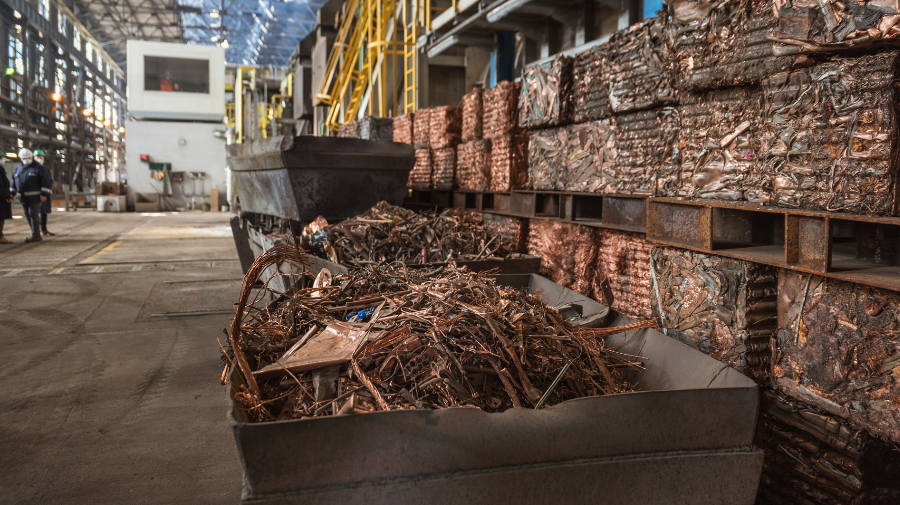
Copper scrap prepared for recycling at copper smelter. Adobe Stock.
Supplies of copper scrap will jump this year due to decade high prices but are unlikely to come fast enough to meet robust demand, leaving shortages that are expected to trigger stock draws and further price gains.
Copper prices around $9,400 a tonne are close to $9,617 hit in February, the highest since August 2011 and more than double the levels seen in March last year, when manufacturing activity crashed due to covid lockdowns.
Scrap typically accounts for about a third of global copper supplies at around 30 million tonnes, but quantities tend to vary according to prices.
“Scrap supplies are unlikely to rise as quickly as the market needs, given logistical constraints and an 8-month lag between price strength and copper scrap coming to market for processing,” said Citi analyst Max Layton.
“The market needs about 10.8 million tonnes of scrap this year compared with 9.3 million tonnes in 2019. Expect major refined metal inventory draws over the next 6 months.”
Citi expects global demand for the metal used widely in power and construction to grow 6.5% this year to 24.75 million tonnes, and sees a deficit of 521,000 tonnes.
Copper stocks held by producers, consumers and China’s state stockpiler are significant, but difficult to monitor.
For clues to draws, the market will watch stocks in London Metal Exchange-registered warehouses and those monitored by the Shanghai Futures Exchange, which currently total more than 360,000 tonnes.
Stocks are expected to start falling as soon as May, when demand accelerates ahead of a pick-up in construction activity over the summer months, which is when prices are likely to start ramping up.
Mine supply too is expected to rise this year, but also not at a fast enough pace to help make up the shortfall.
“Neither mine or scrap supply increases will be sufficient to push the refined copper market into a surplus,” said Bank of America analyst Michael Widmer.
Widmer expects scrap supply to hit records this year due to high prices and acceleration of manufacturing activity, and forecasts a copper market deficit at 315,000 tonnes.
(By Pratima Desai; Editing by Jan Harvey)
No comments:
Post a Comment